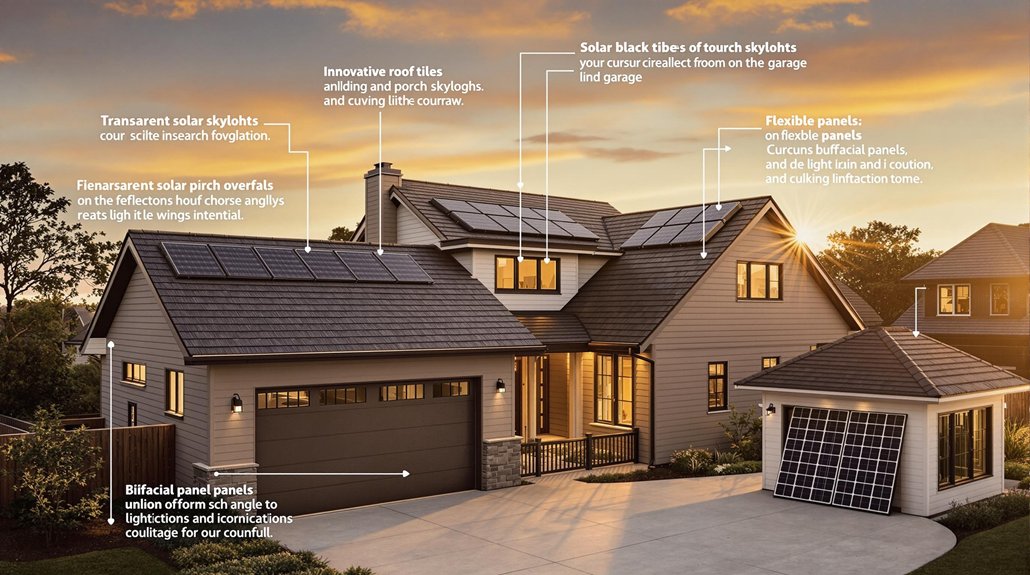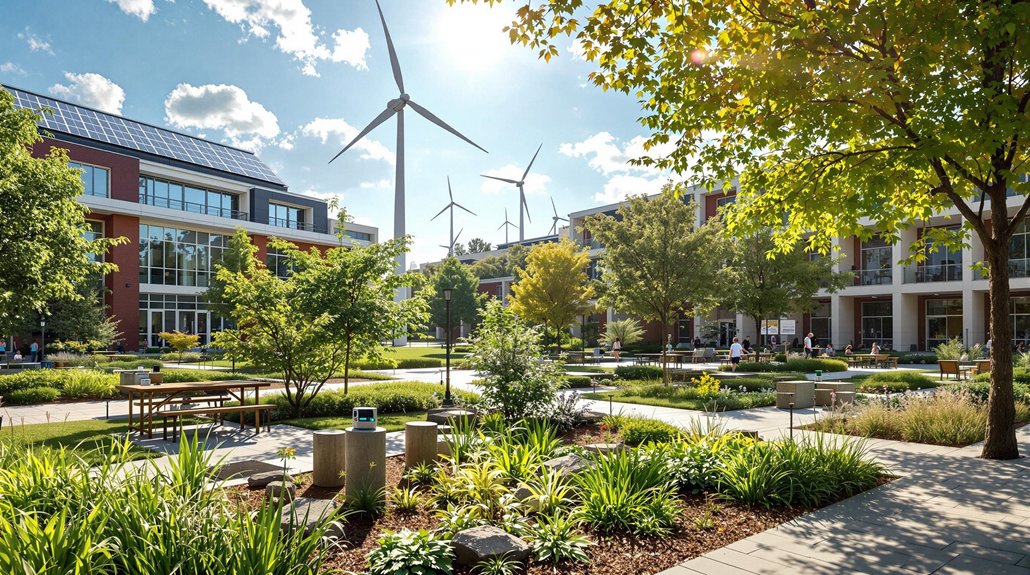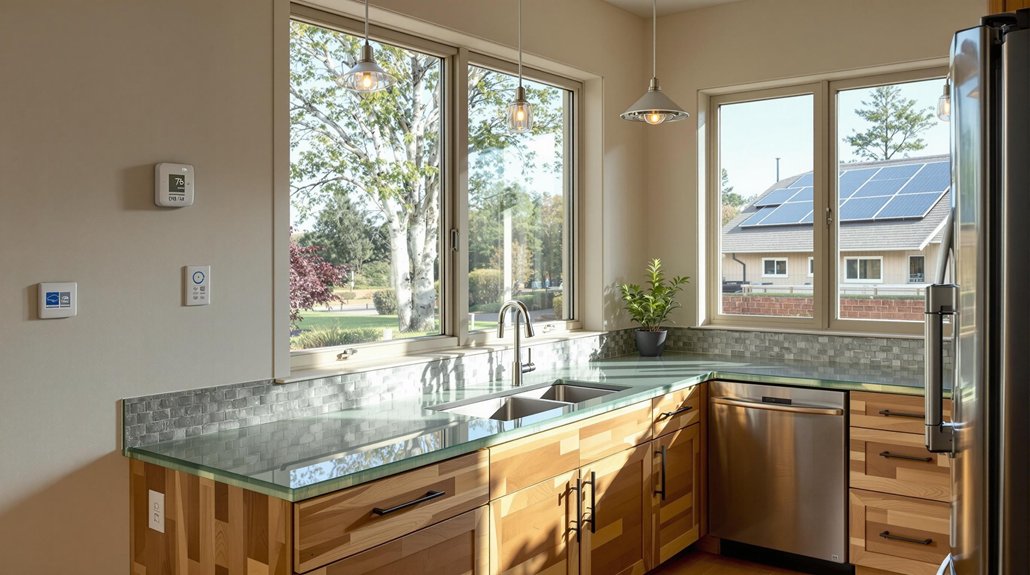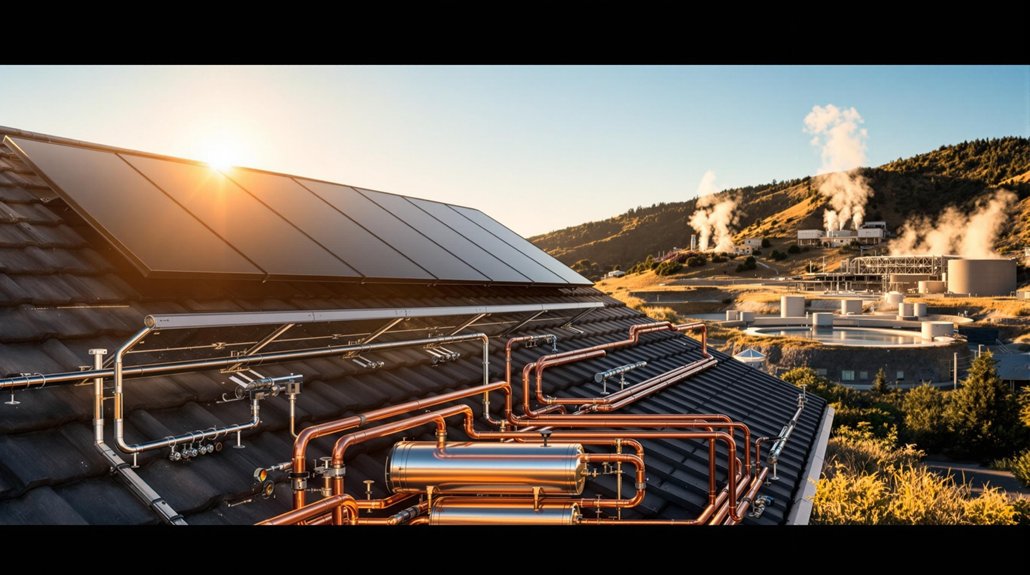Homeowners today have more solar options than ever before. Traditional panels now compete with sleeker designs like solar roof tiles that blend with existing shingles. Bifacial panels capture sunlight from both sides, increasing energy output by up to 30%. Transparent panels allow light to pass through while generating electricity. Flexible options fit curved surfaces, while building-integrated photovoltaics incorporate solar cells directly into building materials. These innovations make sustainable energy both functional and stylish.
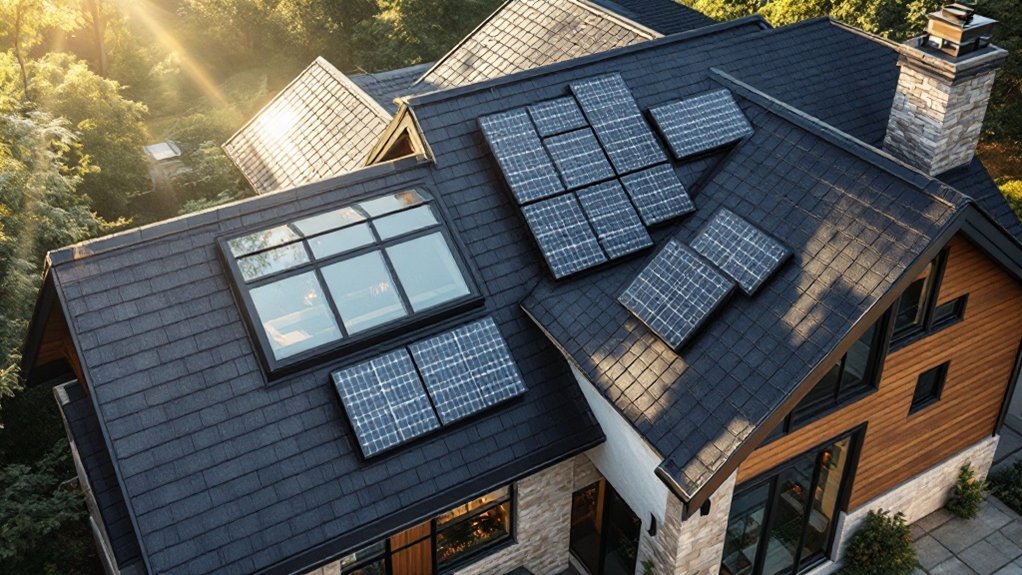
As homeowners search for sustainable energy solutions, solar panel technology continues to evolve with diverse design options for residential use. Traditional solar panels are being joined by newer designs that blend function with aesthetics. One popular option is solar roof tiles, which integrate seamlessly into existing roof designs. These tiles come in various styles and colors to match a home’s appearance. While they’re typically more expensive than traditional panels, they offer durability and can either replace an entire roof or blend with existing shingles.
Solar innovation meets home design as roof tiles transform traditional panels into seamless, stylish energy solutions for today’s homeowners.
For homeowners seeking maximum efficiency, bifacial solar panels capture sunlight from both sides. These panels can increase energy production by up to 30% and work best on flat roofs or ground-mounted systems. They’re often paired with reflective surfaces to maximize output but require specialized mounting systems for best performance. These systems particularly excel in diffuse light conditions, making them suitable for homes in cloudier regions.
Transparent solar panels offer a unique solution for homes with large windows or skylights. These panels generate electricity while still allowing light to pass through. Though currently less efficient than opaque panels, they provide dual functionality for daylighting and power generation and can integrate into smart home systems. The ongoing development of perovskite solar cells could significantly boost the efficiency of these transparent solutions in the near future.
Flexible solar panels provide solutions for homes with curved or irregular surfaces. These thin, lightweight options bend to fit unique spaces but produce less power than rigid panels. They’re popular for mobile applications like RVs and boats but can also be integrated into building membranes or fabrics.
Building-integrated photovoltaics (BIPV) incorporate solar cells directly into building materials like facades and curtain walls. This approach offers both visual appeal and energy generation, potentially reducing construction costs by replacing traditional materials. The cost competitiveness of solar continues to improve, making these integrated solutions increasingly accessible to average homeowners.
For those interested in cutting-edge technology, smart solar panels include microinverters or power optimizers for individual panel monitoring. These systems track performance in real-time, mitigate shading issues, and communicate with home energy management systems. They make maintenance easier and improve overall system efficiency by monitoring each panel separately rather than the system as a whole.
Frequently Asked Questions
How Much Do Solar Panels Increase Home Resale Value?
Solar panels typically increase home resale value by 3-4% on average.
Studies show varying results: Zillow reports a 4.1% increase, while SolarReviews found a 6.8% boost.
The Lawrence Berkeley National Laboratory estimates an average $15,000 increase.
Regional differences exist, with New Jersey seeing up to 9.9% and California adding about $5,911 per kilowatt installed.
Owned systems add more value than leased ones.
Can Solar Panels Work During Power Outages?
Standard solar panels typically don’t work during power outages without special equipment. They shut down automatically as a safety measure to protect utility workers.
However, homes with battery backup systems can continue using solar power during blackouts. These systems store excess energy and switch on when the grid fails.
Off-grid solar setups always work during outages since they’re completely independent of the utility grid.
What Permits Do I Need to Install Solar Panels?
Homeowners typically need several permits for solar panel installation. These include building, electrical, and structural permits.
Many areas also require interconnection permits and zoning approvals. Homeowners with HOAs may need additional permission.
Special cases like historical buildings, ground-mounted systems, or battery storage require extra permits.
The application process involves submitting plans, paying fees, and scheduling inspections.
Some jurisdictions offer expedited permitting through programs like SolarAPP+.
How Often Should Solar Panels Be Cleaned?
Solar panels should be cleaned every 6-12 months on average.
Homes in dusty or polluted areas might need cleaning 3-4 times yearly, while rainy regions may only require annual maintenance.
Regular cleaning improves energy production by 3-5% and prevents long-term damage.
Homeowners should use soft brushes, mild soap, and avoid high-pressure water.
Early morning or evening cleaning is best when panels are cool.
Do Solar Panels Work Well in Cold or Cloudy Climates?
Solar panels actually work very well in cold climates. Cold temperatures increase panel efficiency by up to 20% compared to hot weather.
Even on cloudy days, panels still produce 10-25% of their normal output. Snow can be beneficial, as it reflects additional light onto panels.
Massachusetts and New Jersey, both cold-weather states, are leading solar adopters. Modern panels are designed to capture diffused light on overcast days.
